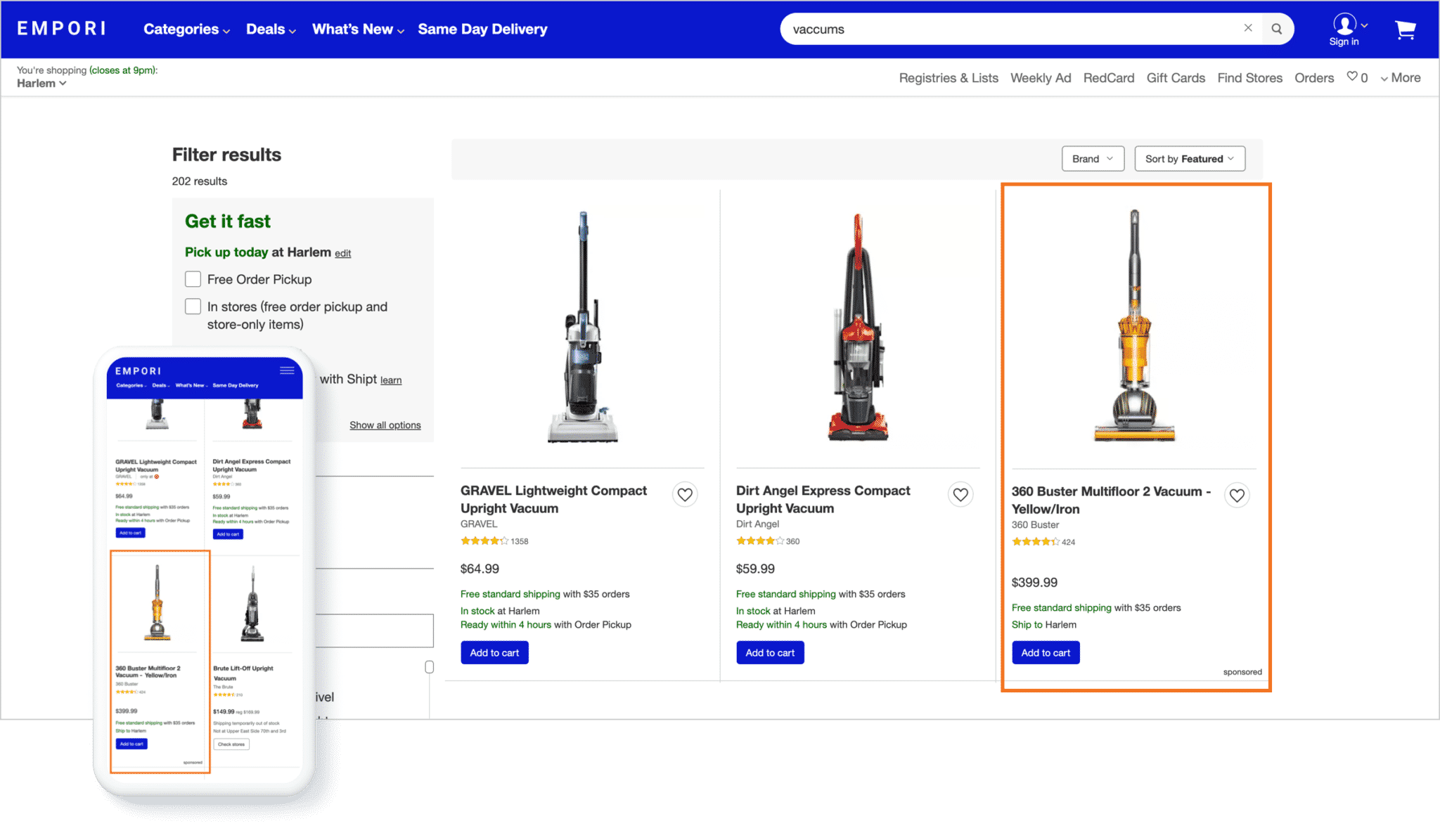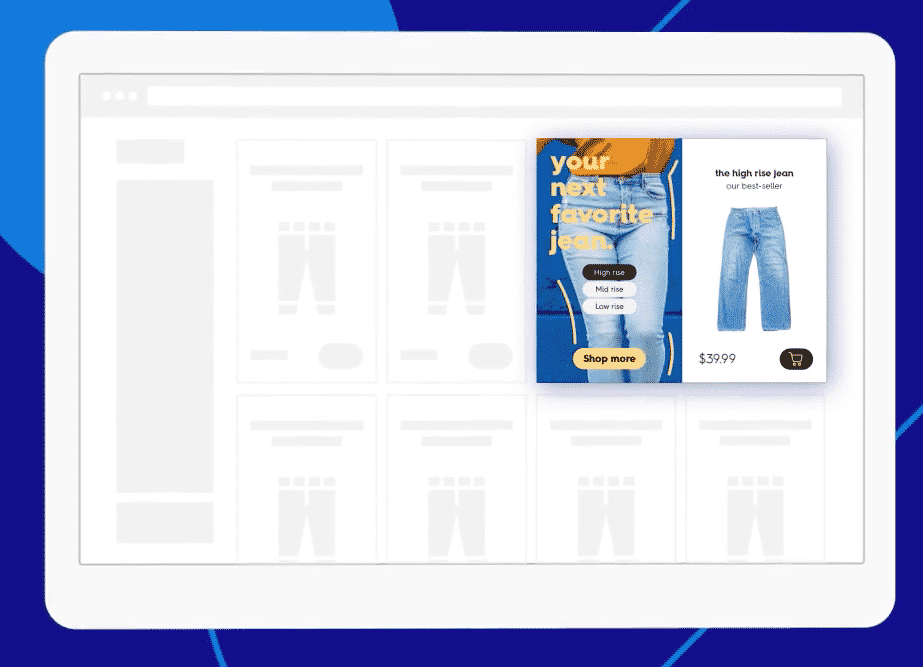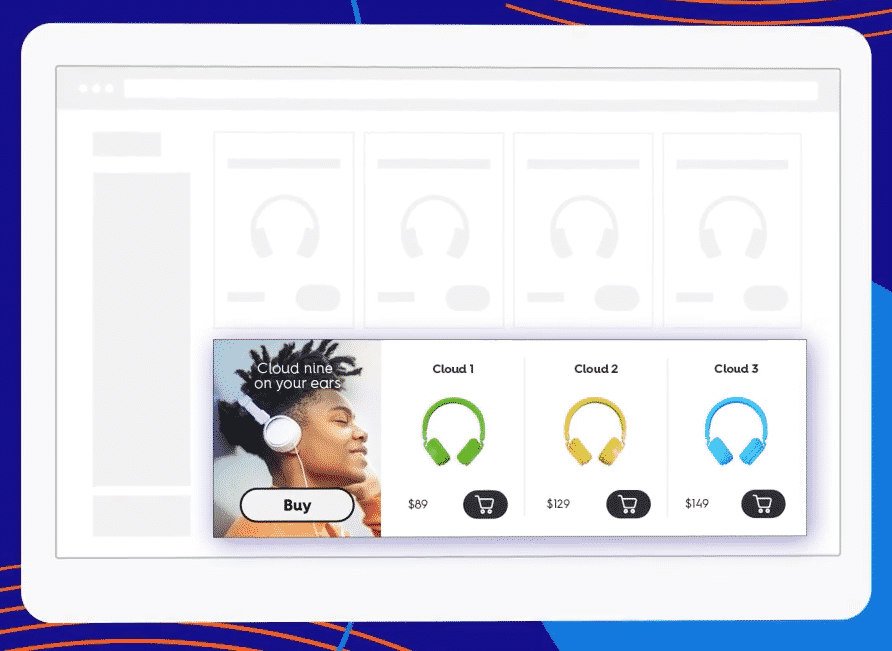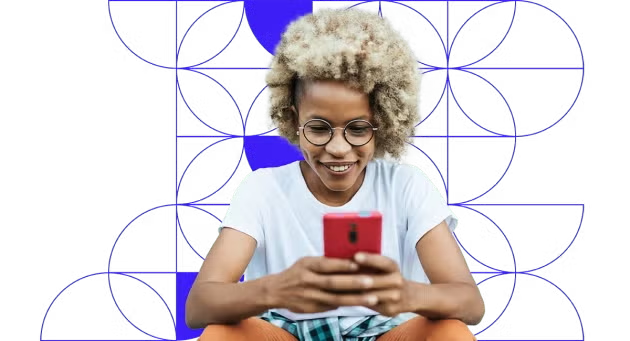The digital shelf has become a key battleground for brands of every size. Retail onsite display advertising brings the power of eye-catching in-store displays straight into the digital realm. Whether you’re a small to mid-size brand looking to stand out on busy retailer sites or aiming to boost product visibility without breaking the bank, retail display ads offer a strategic way to connect with shoppers exactly when and where they’re making buying decisions.
Here’s why retail onsite display advertising is a must-try strategy to help your products grab attention and drive more sales.
The Role of Retail Display in the Shopper Journey
In a brick-and-mortar retail store, shelf-talkers, panels, and point-of-sale (POS) in-store display advertising are key strategies that brands use to elevate their presence on the physical shelf and build awareness and influence consideration. As online has grown in importance, retailers and brands have embraced retail display as a way to achieve the same upper funnel objectives in the digital space.
Retail display is the online equivalent of shelf-talkers and POS displays and is arguably even more important for the ‘infinite’ digital shelf, where products can be hidden below the fold of search and browse pages . In fact, 90% of all products purchased appear on the first page of search results. Even for brands that are household names, if their product isn’t instantly noticeable on a retailer site, the potential sales opportunities will be tremendously reduced. Retail display is the best way to boost visibility on retailer websites and influence the shopper journey.
And it isn’t just for big brands with massive budgets. Smaller brands in particular can greatly benefit from retail display, helping them effectively compete with larger competitors without overspending. This form of advertising allows brands to precisely target and capture shopper attention, driving impactful results.
From the retailer perspective, onsite ecommerce display ads are just as beneficial as their physical store counterparts. They make it easier for the shopper to find what they need, which benefits both the shopper and the retailer in terms of satisfaction. And by offering more premium placements and options for advertisers, retail display brings a new revenue stream to retailers without compromising or disrupting the shopper journey.
How Retail Display Differs from other Onsite Ad Formats
The point of retail display is to connect with the shopper and make sure they see your brand when they browse or search. But more than that, it’s about telling a story, educating, and building recognition so that shoppers add you to their consideration set.
For comparison purposes, here’s what a sponsored product ad, the most commonly known retail media format, looks like. These are great for lower-funnel strategies like driving the highest conversion rate:

And here’s an example of a retail/ecommerce display ad. These are ideal for upper funnel strategies geared toward awareness and consideration:

It’s obvious from this example that retail display ads are more attention-grabbing. But that’s not the only difference. Let’s explore four things that make retail display a unique and impactful format for achieving awareness and consideration goals.
Display in Retail is a Hybrid of Branding and Conversion
Display formats that are custom built for retail are the perfect addition to standard IAB display formats. Standard display is great for scale, run-of-site strategy, and pure-play branding. When advertisers want to incorporate retail-specific elements, personalization, and a more seamless experience, then retail display is the way to go.
With retail display, brands can mix storytelling with features that encourage a purchase, like real-time pricing and add-to-cart buttons. For smaller brands, this hybrid approach means you can optimize your budgets more effectively, ensuring every dollar spent aligns closely with your sales goals. Retail display ads enable you to showcase your unique brand story while also providing immediate pathways for purchase—essential tools for smaller brands aiming for higher conversion rates with more limited resources.
The dynamic nature of retail display also enables brands to personalize each ad to the store and the page the shopper is browsing on, taking into account things like stock, price variation, colors, and special offers. This ensures retailers and brands don’t advertise products that are not in stock or communicate the wrong product information.

It’s Built to Blend In
Because retail display ads are specifically built for retail, they blend seamlessly into the shopping experience, ensuring relevancy and visual alignment with each retailer’s environment. This is crucial for retailers and brands who need to deliver the best experience possible to maximize conversions and loyalty.

It’s a First-Party Data Strategy
Retail display is cookie-free and powered by first-party data. This enables the most relevant targeting and personalization by leveraging keywords, categories, retailer audiences, CRM data, offline data, and other first-party data sources. By using retailer insights such as purchase history and browsing behavior, smaller brands can precisely target niche audiences, maximizing ad spend efficiency and effectiveness, ensuring each ad reaches the right shopper at the right moment. With this higher level of relevancy, retailers and brands are better able to keep the shopper in the retail environment to discover more products on product pages or shop-in-shops.
Retail Display is Tied to Sales
Though retail display is an upper-funnel tactic geared more towards awareness and consideration, the ultimate goal of standing out on the digital shelf is to drive more product sales. Retail display campaigns are measurable down to the SKU level, allowing brands and retailers to directly tie media spend to sales outcomes. Because it’s not only about generating awareness and being there—it’s also about influencing the purchase, directly at the point-of-sale.
Real-world Success Story: Michaels.com
To illustrate the tangible benefits of onsite display, consider the success story of an art materials brand that partnered with Criteo to boost their return on ad spend (ROAS) at Michaels.com, a leading arts and crafts retailer.
Collaborating with Criteo, the brand implemented a dual-format advertising strategy that combined onsite display and sponsored products. This approach allowed for increased visibility and engagement across Michaels’ digital storefront. By leveraging both onsite display and sponsored products, the brand saw exceptional results. This strategy resulted in an impressive 926% increase in ROAS, a 412% jump in sales, and generated over 125,000 impressions. Continuously optimized placements ensured maximum visibility, demonstrating the power of a well-executed retail display campaign to significantly impact brands aiming to make a splash on the digital shelf.
Retail Display Benefits for Brands and Retailers
To sum it up, this premium, built-for-retail format has benefits for both sides of the retail media ecosystem:
Brand Benefits:
- Grow your brand
- Stand out on the digital shelf
- Compete effectively by gaining premium visibility
- Tell your story while engaging shoppers and driving sales
- Activate first-party audience targeted ads
- Scale your display advertising: re-use assets, extend reach, and increase sales with a point-of-sale display opportunity
- Achieve significant impact with targeted budgets
- Quickly adapt and optimize campaigns based on real-time performance metrics
Retailer Benefits:
- Scale your retail media program
- Enhance the shopper experience by offering relevant, eye-catching, but non-disruptive ads
- Create new bottom-line revenue by tapping into upper-funnel brand budgets
- Scale opportunities for inventory-constrained brands
Interested in learning more about retail display? Contact us.
Want to keep learning about retail media? Read our Retail Media Guide.


















